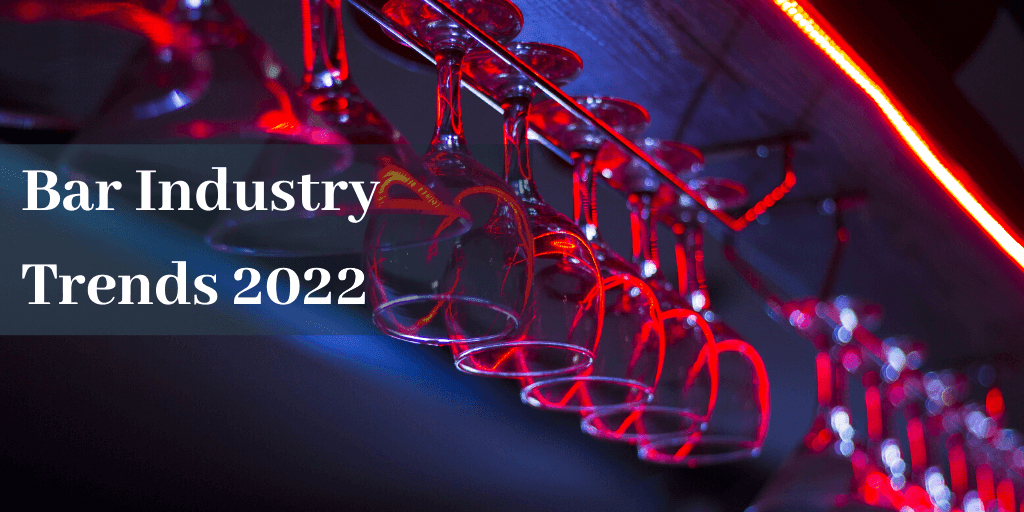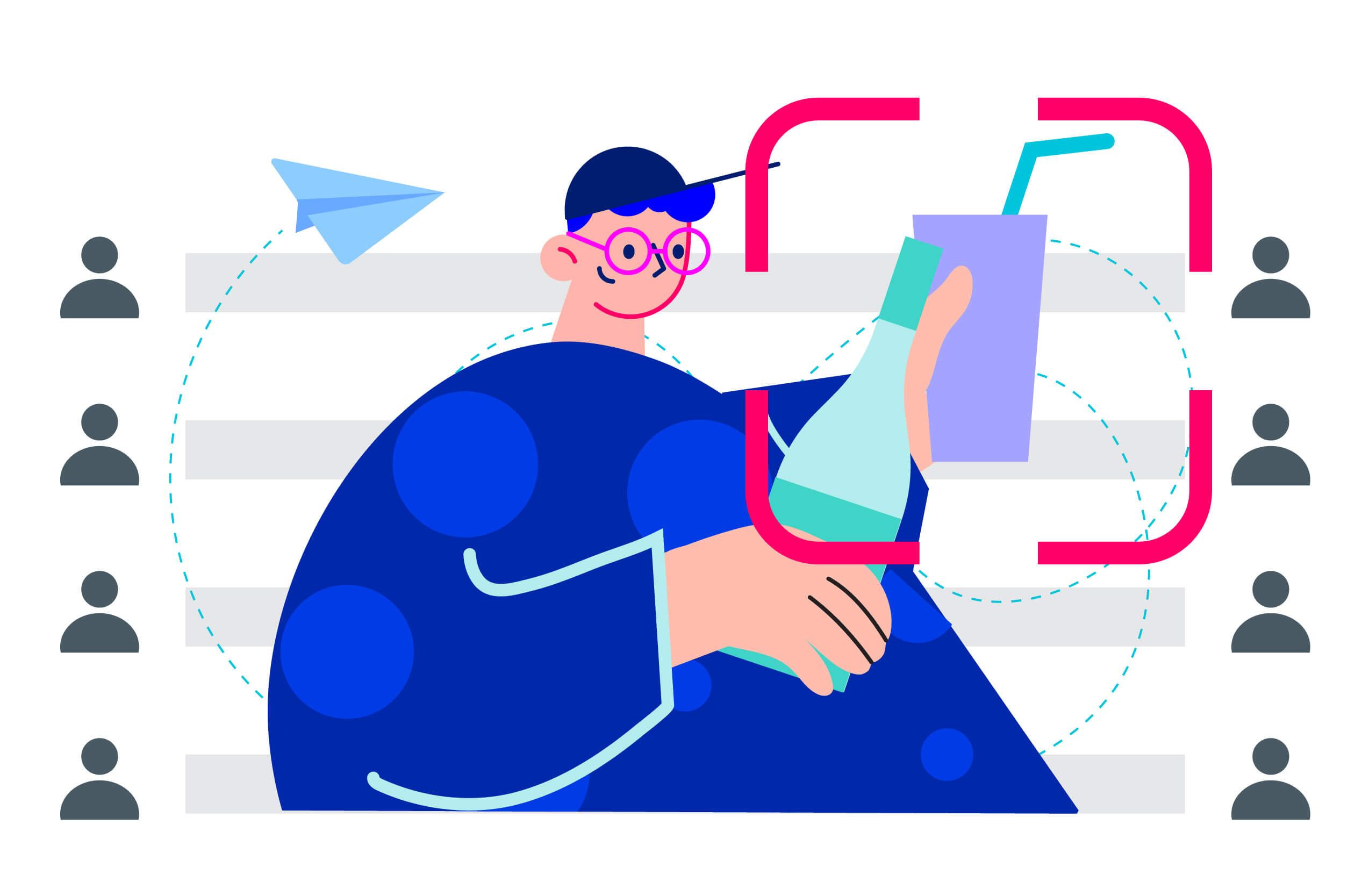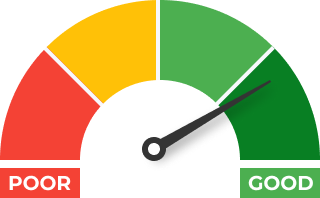A lot has changed in the bar and nightclub industry within the past few years. What used to be commonplace and traditional got overturned by the ravages of unexpected events, and new trends have come up in response.
As the dynamics in hospitality shift, acquiring that extra knowledge is critical if you want to move quickly and always stay ahead of the curve, even in today’s post-covid world.
This report will cover various topics, from menu ideas to bar design and operations technology trends. All to give you a better idea of what to expect in the years to come
The Bar and Nightclub Industry This 2022
Before we dive into individual trends, let’s look at how the industry is doing this year.
Looking at the bigger picture, alcohol sales comprise about USD 284 billion in revenue this 2022 and are projected to grow by 7.45% annually.
More than half of this revenue will be generated in bars, nightclubs, and restaurants. Furthermore, over 1.5% of this total revenue are sales conducted through online marketplaces.
While these figures remain strong, bars and nightclubs already struggled even before the pandemic. For instance, according to The Economist, the number of nightclubs in the US alone shrank by about 10% in the decade before the Covid-19 pandemic even started.
If you expected that the industry would struggle more during the pandemic, you would be right.
In fact, Fortune reports that about 110,000 food and beverage establishments closed during the height of the pandemic.
So what does this mean for the industry?
For one, the average revenue per establishment is likely to grow. While that’s great and all, it will come at the expense of businesses that couldn’t cope with the pandemic.
As fewer establishments take a more significant cut of the market, a lot more becomes at stake this year – whether you’re looking to grow and expand or simply keep the doors open.
So, what can you do to maximize your chances of success? A good start is learning about the most common bar and nightclub industry trends in order to adapt.
Current Trends in the Bar Industry
Now that we’ve had a look at the numbers on a macro level, it’s time to drill into the specific trends shaping the industry today.
1. Increasing demand for healthier drinks
According to KPMG, sales of low-alcoholic wines, beers, and spirits are on the rise. In addition, a post-pandemic report from Mintel shows that low-calorie drinks are expected to gain more interest in the coming years.
This indicates a growing preference for healthy alternatives, primarily fueled by millennials looking for new and unique offerings.
So how can you take advantage of this trend? If you’re not doing it yet, consider building up a healthy selection of drinks like kombucha and plant-based waters.
Of course, make sure your bartenders are trained up and ready to offer these as healthy alternatives to soft drinks and beer.
2. A taste for local flavors
Microbreweries are small breweries that produce limited amounts of alcohol, usually specialty and craft beer, and typically only sell around their local area.
In 2018, there were over 7,000 craft breweries in the US alone, 4,522 of which were classified as microbreweries.
In 2010, this number was only 620 – a 7x increase in just eight years.
Evidently, the surge in microbreweries corresponds to the rise in craft beer consumption.
Along with that, we’ve also seen a spike in Brewpubs and regional breweries, indicating a preference for local, authentic beers.
So, if you haven’t already, look up the breweries near you and try out their products. A local selection and some good storytelling from your staff are likely to keep your customers coming back for more.
Another more recent offshoot of this trend is internationally-made gins that incorporate local flavors. Examples of this are the India-based Jin Jiji brand, the Four Pillars Bloody Shiraz Gin, and the Vietnamese Song Cai.
3. Self-service systems play an increasing role
The past few years have seen the rise of self-service systems in bars, positioned as a way to streamline operations.
However, the pandemic years have seen one of the most significant labor shortages, also known as the Great Resignation. Understandably, the hospitality industry is one of the most affected.
Something many people overlooked, however, is a potential solution that has been looming over us for quite some time now.
The solution? Self-service technology.
While there isn’t any official data about self-service in bars, many establishments have already been offering self-pour beer, alcohol vending machines, and cocktails on tap for years now.
These are all innovative ways to reduce service times and achieve higher efficiency without relying on labor. Customers can pay for and pour their own drinks without lining up at the bar, like in self-checkout lanes at supermarkets.
The installation may be costly, but it does offer several key advantages, including:
- Reduced keg waste (as much as $142 saved per keg)
- Better customer experience.
- Reduced strain on overworked bartenders.
Investing in a solution like this isn’t for everyone, but it’s a good choice for high-volume bars that sell lots of beer and often lose employees due to workload.
It’s also an excellent way to minimize reliance on labor, which can cost you a significant amount right now because of the increased demand and tight supply.
4. Mocktails and zero-proof drinks are still a thing
According to Mintel, orders for alcohol-free mixed drinks grew by 35% between 2016 and 2019.
It comes as no surprise that numerous alcohol-free bars are opening doors across the country. In addition, traditional bars are also updating their menu with mocktails and other zero-proof drinks.
The margins here are particularly attractive since you can use cheaper ingredients and still charge a price close to that of a standard cocktail.
This is especially critical in a post-pandemic world, where most establishments are still reeling from the income losses caused by Covid-19 lockdowns these past two years.
If you’re not already serving zero-proof drinks, think about the type of crowd you want to attract and whether it makes sense to introduce them in your bar.
Mocktails are especially popular with young women and the growing group of health-conscious, zero-alcohol demographic ushered in by the unique situation of the Covid-19 pandemic. This type of beverage might be a good strategy to offer them something they want.
5. Greater demand for premium mixers
Just as coffee enthusiasts are happy to pay double or more for brewed coffee, premium mixers with zero calories are also starting to become a popular choice in the bar industry.
Evidently, the market values high-quality ingredients – which is good for establishments since they can command higher prices on cocktails and mixed drinks.
So, if you want to improve your bottom line, you might want to stock up on more expensive mixers and upgrade your recipes with more premium ingredients.
6. Focus on supply chain management
Recent years have brought about a situation many economists have warned us about: supply chain issues. Triggered by the worldwide pandemic, massive supply chain disruptions are causing shortages across the board.
These supply chain problems can make your bar operations a lot more complicated if you’re not prepared.
Many bars and restaurants still seem to think that if they can’t get the items they need from their old supplier, they can just switch to a new one. But it’s not that easy, especially if everyone is experiencing shortages.
For instance, if your product, material, or ingredient comes from another country, you’re more likely to get affected by shortages.
Here are a few tips that can help you avoid such situations:
- Buy in bulk and carry more inventory to preserve supplies while you can
- Modify menus to be able to switch brands of ingredients or beverages easily
- Use local alternatives for various ingredients or products
7. A comeback for classic cocktails
A resurgence of classic cocktails isn’t unheard of. Like fashion, alcoholic drinks can be quite cyclical, with the popularity of traditional drinks waxing and waning throughout the years.
After two years of on-and-off lockdowns, social distancing measures, and other restrictions, many bar-goers have become attracted to the idea of nostalgic drinks – with a twist.
That said, many of these so-called ‘retro’ drinks can be quite complex and time-consuming, which can slow down service and require more expertise. Unless you specialize in these, your selection and focus should be on classics like Mojitos and the Old Fashioned.
This will require fewer resources on bartender training and speed up the service, so it’s a win-win for your customers and operations.
8. A move towards operational efficiency
As employee wages go higher, it becomes even harder to attract and retain good servers and bartenders. After all, everyone wants to go another step up the ladder, regardless of where that ladder may be.
That’s why, for many bars and nightclubs, losing employees is simply part of the day-to-day, despite the heavy investment in training new hires.
So, with these developments in mind and the competitive nature of the industry, we expect an even bigger push towards operational efficiency.
We already touched upon solutions like self-pouring and alcohol vending machines, but there are things you can do today that can boost your bottom line immediately.
For example, many bars have bartenders that double as servers, too.
Of course, one of the most important things in running a successful bar is creating and maintaining strict operating procedures that everyone must follow.
Still, the most significant shift in efficiency usually comes from technology.
9. Bigger role of data and technology
There’s no denying that technology now plays a crucial role in running a successful bar.
We expect this trend to grow and specifically go into better data collection and analysis. It’s great to know your best sellers, best-rated drinks, and other market information to make better decisions in the future.
This is all the more true in the post-pandemic world, where competition is tough, supply is low, and market conditions are frighteningly dynamic. Having the correct data on hand may just be what saves you from making a disastrous call.
Glimpse is an excellent example of software you can use for that. Glimpse lets you track your bar operations, helping you catch inconsistencies, revenue loss, and areas where better operational policies should be enforced.
10. Labor crunch affecting hiring rates
Perhaps one of the most significant trends to watch out for this 2022 is the increased competition for employees in the job market in the hospitality industry, which includes hotels, restaurants, and bars.
A poll done last July 2021 by Bloomberg, during the early days of the Covid recovery phase, surveyed about 13,000 job seekers who used to work in the hospitality industry. About half of them said that they were no longer willing to come back.
Other data corresponds with these findings.
Business Insider published a piece on how the hospitality industry suffers twice the national average rate of employees quitting their jobs. The National Restaurant Association has also indicated that staffing problems will likely continue for the year in their 2022 State of the Restaurant Industry report.
Thus, bars and nightclub owners need to plan accordingly to thrive in a historically tight labor market. Some strategies that can be employed include the following:
- Restructuring pay and benefits to be more appealing to employees
- Enhancing non-monetary work benefits such as meals, parking spaces, childcare, health, safety, etc.
- Preventing the need for urgent staffing by focusing on employee retention
Understanding Bar Industry Trends in 2022
So there you have it: our list of the top bar industry trends to watch in 2022. With that in mind, it’s time to go out and capitalize on them.
With many establishments closing down, it’s essential to hunker down and keep your finger on the pulse of things. Be highly aware of crucial information and numbers – with fierce competition and volatile market conditions, you will often rely on your data to react accordingly.
The significant patterns we can see involve a move towards greater operational efficiency and a good thrust for automation and restructuring across the industry.
We also expect a growing reliance on technology, data collection, and analysis to make better decisions and achieve higher operational efficiency.
In any case, educating yourself about the market and taking action one step at a time is the first stage in streamlining your bar and making 2022 your most successful year to date.
Glimpse is a loss prevention software that can help you make your bar operations a lot smoother and more efficient. Interested in learning what it can do for you and your business? Schedule a demo now!









 +1 (786) 292-2373
+1 (786) 292-2373 insights@glimpsecorp.com
insights@glimpsecorp.com





